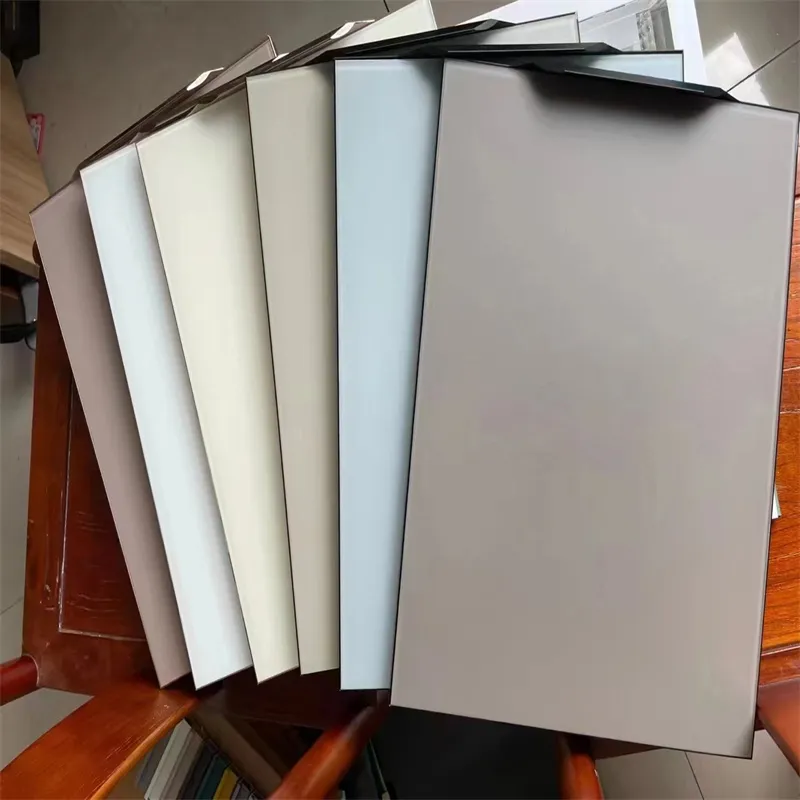Nov . 07, 2024 11:29 Back to list
Cost Analysis of 4mm Float Glass Prices in Current Market Trends
Understanding the Price of 4mm Float Glass Factors and Market Trends
Float glass, known for its consistent thickness and optical clarity, is a fundamental building material used worldwide in both residential and commercial applications. The price of float glass, specifically 4mm thickness, has seen fluctuations over the years influenced by various factors, including raw material costs, demand and supply dynamics, and economic conditions. In this article, we delve into the intricacies of the 4mm float glass market, exploring the reasons behind its pricing and current trends.
What is 4mm Float Glass?
Float glass is produced by floating molten glass on top of molten tin, which results in a flat and glossy surface. The 4mm thickness is particularly popular for applications such as windows, displays, and glass doors, providing a balance of strength, weight, and transparency. Its clarity and smooth finish make it ideal for aesthetic applications, while its durability and affordability contribute to its widespread use.
Factors Affecting 4mm Float Glass Prices
1. Raw Material Costs The primary materials used in the production of float glass include silica sand, soda ash, and limestone. Prices of these raw materials can fluctuate significantly due to market demand, mining restrictions, and transportation costs. When the costs of these inputs rise, manufacturers often pass on these expenses to consumers, resulting in higher prices for float glass.
2. Energy Prices The manufacturing process of float glass is energy-intensive, involving high-temperature furnaces. Consequently, energy prices play a crucial role in determining the overall production cost. In periods of rising energy costs, manufacturers may increase their selling prices to maintain profit margins, impacting the price of 4mm float glass.
3. Demand and Supply Dynamics The construction industry heavily influences the demand for float glass. As new construction projects increase, so does the need for glass, leading to a rise in prices. Conversely, in economic downturns, demand may decrease, causing prices to stabilize or even drop. Additionally, supply chain issues, such as transportation delays or shortages in manufacturing capacity, can disrupt the balance of supply and demand, further impacting prices.
4mm float glass price

4. Geopolitical Factors Geopolitical events can also affect the glass market. Trade tariffs, political instability in glass-producing regions, or changes in international trade agreements can lead to fluctuations in availability and pricing. Therefore, a comprehensive understanding of the global market helps in predicting potential price shifts for 4mm float glass.
5. Technological Advancements Innovations in glass production technology can lead to cost reductions and improved efficiency in manufacturing processes. As manufacturers adopt new technologies, they may be able to offer 4mm float glass at more competitive prices. Conversely, if new regulations necessitate advanced, costly production methods, prices may increase.
Current Market Trends
As of late 2023, the float glass market has shown signs of recovery following the economic disruptions caused by the COVID-19 pandemic. Many construction projects that were delayed are now moving forward, boosting demand for 4mm float glass. Additionally, green building trends are increasing the demand for energy-efficient glass products, which may include specialized coatings or treatments that affect pricing.
Moreover, the rise of e-commerce and global trade has expanded market access for manufacturers and suppliers, leading to a more competitive environment. This increased competition can affect pricing strategies, giving consumers more options and potentially stabilizing prices.
Conclusion
In conclusion, the price of 4mm float glass is influenced by a complex interplay of raw material costs, energy prices, demand-supply dynamics, geopolitical events, and technological advancements. As the market continues to evolve, staying informed about these factors is essential for businesses and consumers alike. Understanding the intricacies of the float glass market not only helps in making informed purchasing decisions but also in anticipating future trends and potential price fluctuations. Whether you are a builder, contractor, or simply interested in the glass industry, keeping an eye on the market dynamics will enable you to navigate this essential material's pricing landscape effectively.
-
Safety and Style with Premium Laminated Glass Solutions
NewsJun.24,2025
-
Reinvents Security with Premium Wired Glass
NewsJun.24,2025
-
Premium Float Glass Line for Modern Architecture
NewsJun.24,2025
-
Low Emissivity Glass for Energy-Efficient Architecture
NewsJun.24,2025
-
High-Performance Insulated Glass Solutions for Modern Architecture
NewsJun.24,2025
-
Elevates Interior Style with Premium Silver Mirror
NewsJun.24,2025
Related PRODUCTS














